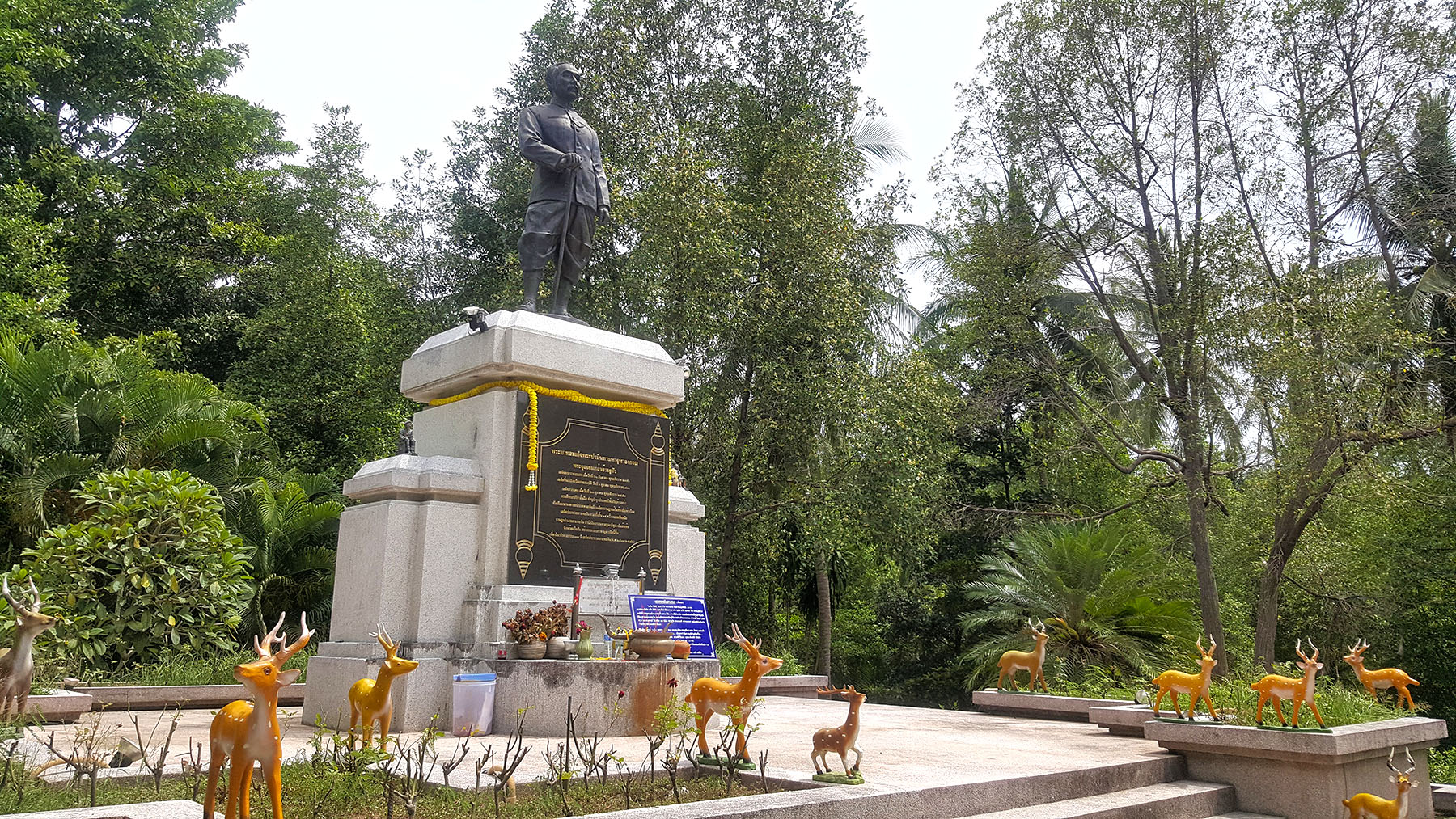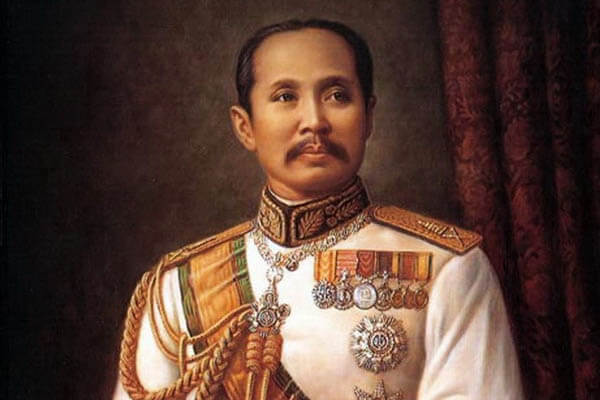Am 23. October is the anniversary of the death of the popular king Chulalongkorn Rama V the Great, and a Holiday in Thailand. Commemorations are held everywhere and garlands of flowers and offerings are laid on the king's statues. Offices, authorities and banks are closed on this day.
Chulalongkorn was born on September 20, 1853 and died on October 23, 1910, according to 42 years of reign in which he laid the foundations for Thailand as we know it today with large-scale reforms.
Education set the course early on
Prince Chulalongkorn was the eldest son of King Mongkut Rama IV and Queen Debsirindra. King Mongkut also recognized the signs of the times and gave the prince one extensive and broad-based education coming, according to both Siamese and Western concepts. He received among other things English lessons from Anna Leonowens, who specially traveled to the court in Bangkok.
Her life at the royal court was first recorded in 1946 under the title "Anna and the King of Siam" filmed, then in 1956 as a musical with the title "The King and I", in 1972 as a television series and in 1999 as a cartoon and a real film Judy Foster under the title "Anna and the King“That some of you may still know.
Under the reign
In August 1868, the 15-year-old prince and his father observed the solar eclipse in the jungle of southern Thailand and became infected with malaria. King Mongkut passed away in October of the same year. prince Chulalongkorn became from the Great Council to the King Chophraya Si Suriyawong, chief minister of the southern provinces and the military, was elected as his regent until the age of majority.
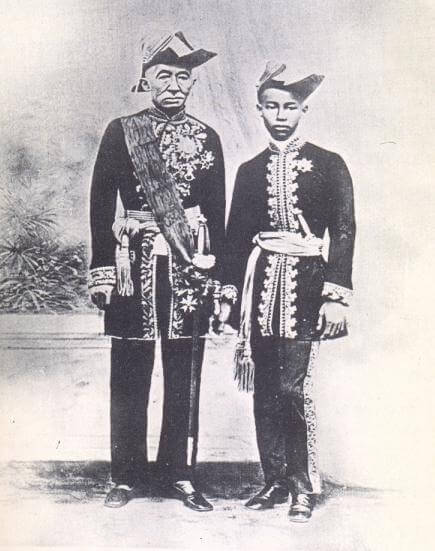
The young king led his Studies continued, he studied biology, swordsmanship, engineering, English, anthropology, European politics and military science, and he travelled. At a young age he traveled to Dutch and British colonial areas to get to know the European administration. He was accompanied by young princes and aristocrats who would later become his closest circle of supporters and as "Young Siamese party“As described by the British Consul General. Later his path also took him to Europe.
Reform, reform, reform
King Chulalongkorn thirsted for it Reform and modernization. In 1870, three years before he came of age, he founded one Audit Officein order to remove state revenues from the control of powerful, aristocratic families. In 1873, as the ruling king, an organization based on the European model was founded Tax authority. The founding of the Council of State in May 1874, whose main task was to develop reform proposals. In August of the same year the Privy Council introduced whose members should advise the king personally. So it became Slave labor forbidden that slavery was abolished that Gambling was banned (which was the most common reason people fell into bondage) the Prostration before the king was abolished and government officials could write theirs to the king Share your opinion (without having to expect penalties).
Rama V left no stone unturned
The king often traveled anonymously through the country and was able to uncover many weak points. So many came into being small reforms and improvements that increased people's confidence in the state and monarchy. With the introduction of the Thesaphiban system to administer the country, he overturned the traditional, Southeast Asian mandala system of exercise of power. The whole country was now subordinate to the central government, provinces (Changwat) were formed which were grouped into large circles (Monthon) and were supervised by representatives of the Ministry of the Interior. Schools were built and English introduced as a subject. Outstanding students were with scholarships equipped and sent to Europe, regardless of where the children came from or what social class their families were. The king let too hospitals build, but at that time the Thais trusted herbal medicine even more than western medicine and were accordingly skeptical.
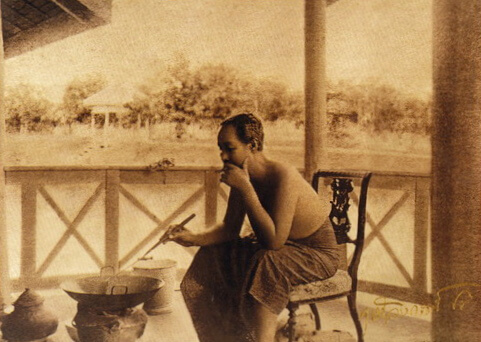
During his reign he started building, initially strategically motivated, Railway lines started, at his death there were already 774 kilometers of railway lines. The Modernization of the legal system King Chulalongkorn transferred in 1897 to one of his sons, whom he made Minister of Justice after graduating from Oxford. Together with the royal advisor Gustave Rolin-Jaequemyns, a Belgian lawyer, revised, reformed and modernized Prince Rabi Badhanasakti the Thai law from the ground up. Rama V was also a modern ruler in religious politics; he represented them religious freedom, although he was closely and deeply connected to Buddhism. By donating land, he ensured that Christian churches and Islamic mosques could be built.
Thailand was never under colonial rule
It is thanks to King Chulalongkorn's foreign policy skills, his modern and cosmopolitan attitude and his great reforms that Thailand was never ruled by a colonial power. On the contrary, Siam was a recognized and accepted one Buffer state between the colonial areas of Southeast Asia. He was the first Siamese king to establish direct contact with the European royal families. By handing over smaller parts of the empire to the French and British, the king was able to preserve the sovereignty and integrity of Siam.
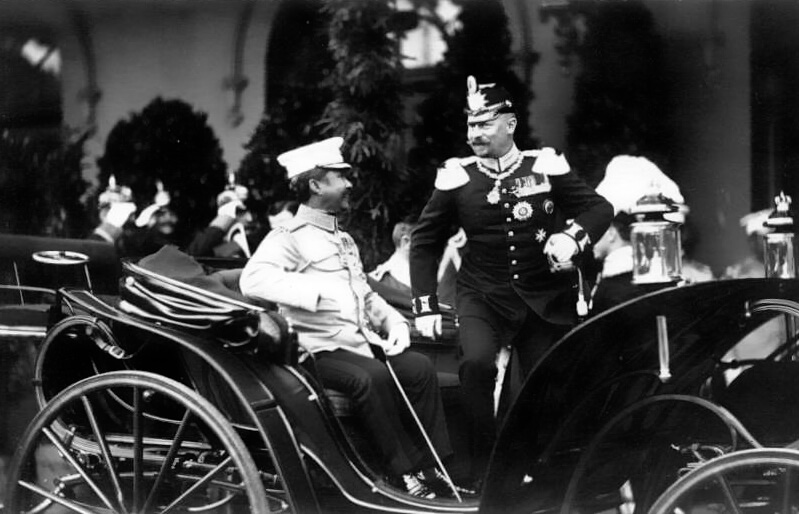
King Chulalongkorn in Braunschweig, Germany
Delicate - The Inner Palace
Only women resided in the Inner Palace, and at the best of times around 3000 in number. King Chulalongkorn had 153 wives and 76 children. All men except the King himself, whose private quarters were in the Inner Palace, were strictly forbidden from entering. His sons also had to stay outside after they were eleven. In addition to the wives, concubines, judges, guards, moneylenders, servants and cooks lived in the Inner Palace. This harem was three times larger than the largest known harem in the Ottoman Empire.
The birth of a cult
In Thailand the holiday is called "Wan Piyamaharat" which translates Day of the beloved, great King called. Chulalongkorn's son, King Vajiravudh Rama VI, posthumously conferred the title of Piyamaharat on his father and ordered his public veneration. In the 1980-1990s, a species developed independently of the state ceremonies religious cult around Rama V. Chinese entrepreneurs from Bangkok started the late king like one during the economic boom from 1987 to 1996 protective spirit to worship and invoke for economic prosperity, against corrupt officials and against fluctuations in the world economy. This new one Chulalongkorn cult spread quickly through all walks of life, so that during the Asian crisis in 1997 and 1998 there were weekly prayers and offerings at the statue of the king in Bangkok.
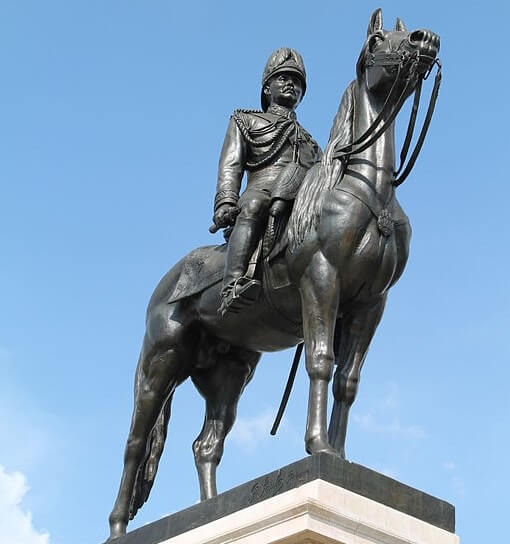
Today are in many households Pictures distributed by Rama V, and books and notebooks are also written by him Texts printed.
The UNESCO added the archival documents of King Chulalongkorn and the transformation of Siam to the list of World heritage placed.
Rama V and Koh Phangan
King Chulalongkorn visited Koh Phangan for the first time in 1888, visiting the falls of Than Sadet visited and bathed in it.
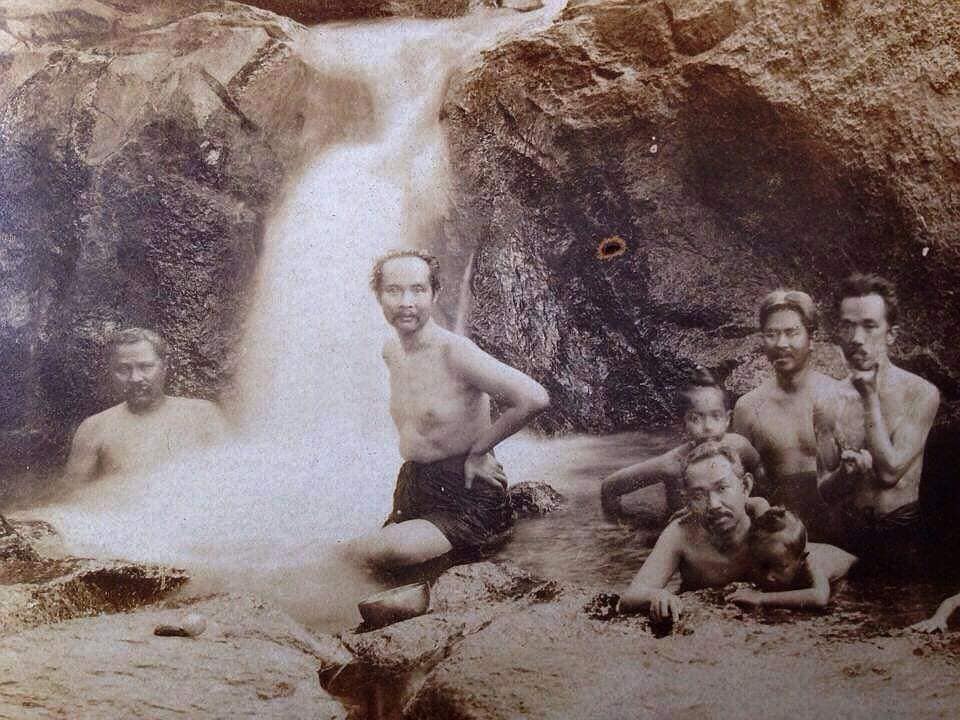
The island, especially the waterfalls, was so popular with the king that he should travel here 14 more times. Visible evidence of these visits are the royal ones Inscriptions on several rocks by the watercourse. Other kings of Thailand also came to Than Sadet, which roughly translates as “river visited by kings”. Rama V is also immortalized with a statue above the waterfall on the road to Haad Sadet.
